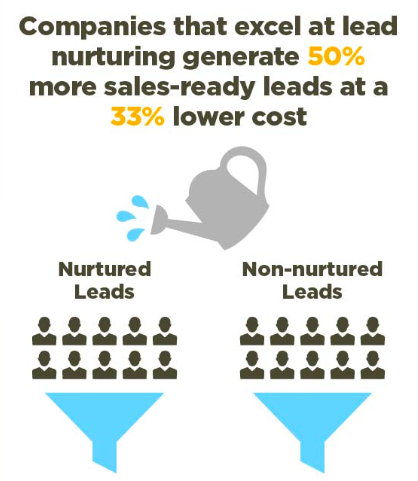How do I write a good nurture email campaign for my business?
In content marketing, it’s not enough to simply acquire new leads—since statistically, 80% of these leads won’t actually translate into a sale.
Why?
Because in a lot of cases, customers aren’t ready to make a purchase. Therefore, it’s your job to nurture them through your sales funnel to get them there.

Now, in my opinion, the best way to do this is by using email. Email is your direct connection to your customers. However, a good nurture email campaign requires you to create engaging and strategic content. So, to answer your question, here’s how I would go about ensuring that:
1. Always Remember to Deliver Value
Lead nurturing emails are intended to convince and entice your audience into making a definitive decision about your product or service. To that end, you have to be able to offer something relevant and valuable to them. How can you help them learn more about the topic to become better informed? What do they not know about your product or service that would be relevant to their decision? What little titbits of information can help sway their decision?
2. Be Brief
Always assume that your leads are busy. It’s very likely they won’t have time to read an entire wall of text. So, resist the urge to write everything about your company or your product in a single email. Don’t overload your audience with too much information, pitch too many calls to actions, or add unrelated links that will only serve to confuse them. Stay focused and keep it short.
3. Map It Out
Related to the above, your nurture emails should follow a natural progression offering bite-sized pieces of information in a sequential narrative that will ultimately result in your leads deciding to make a purchase. It’s very helpful to see everything mapped out so you understand the different stages of the sales funnel and to learn more about their needs and wants for each stage so you can break down your key message sequence.
For example, the first email you send in this series could be more educational. This can be followed by an email that gives your customers a little nudge towards making a purchase. From there, you can follow it up with more product-focused content. Through it all, I like to remind recipients that they’re getting a series of emails from me. Additionally, one tip that I’d like to share that I found helpful is to mention what my last email was, so they make an obvious connection to the current one. This helps establish the relevance of my communication and conveys consistency.
4. Avoid Being Monotonous
While we’re on the subject of mapping out your content, remember to mix things up a bit. I know you’re driving towards a very specific goal, but you’re also sending multiple emails. If you don’t make them distinct from one another, it’s all going to read like spam and your audience will fail to see any value in it at all.
There you have it. Hope my answer helps! As always, if you have any questions, do feel free to shoot me an email and I will get back to you as soon as I can.
Share This Story
Get the latest growth ideas, strategies, and best practices delivered to your inbox.
Quick read that helps 7000+ subscribers.





